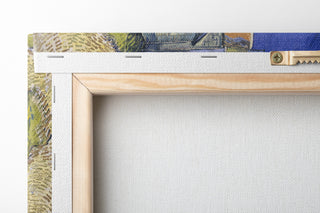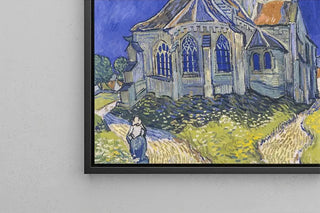Art print Vue du Castello Caetani et de la ville colline de Sermoneta Lazio Italie - Edward Lear


View from behind

Frame (optional)
Vue of the Castello Caetani and the hilltop town of Sermoneta, Lazio, Italy: a captivating panorama in the heart of Italy
The art print of the canvas "Vue du Castello Caetani et de la ville colline de Sermoneta Lazio Italie" by Edward Lear transports us to a picturesque landscape where nature and architecture meet harmoniously. The soft hues of the canvas, blending lush greens with warm shades of stone buildings, create a serene and welcoming atmosphere. Lear, master of landscape, uses delicate brushstrokes to capture the sunlight reflecting on the castle walls, adding an almost magical dimension to this scene. Every detail, from the trees to the clouds, seems to breathe the tranquility of the Italian countryside, inviting the viewer to immerse themselves in this painting.
Edward Lear: a pioneer of romantic landscape
Edward Lear, born in 1812, is recognized as one of the forerunners of 19th-century romantic landscape art. Influenced by artists such as J.M.W. Turner, Lear developed a unique style that combines precision and poetry. His travels across Europe, especially in Italy, profoundly influenced his work, allowing him to capture the beauty of landscapes with unmatched sensitivity. Lear is also famous for his illustrations in children's books, but it is in his landscapes that one perceives the full depth of his talent. The art print of "Vue du Castello Caetani" demonstrates his skill in immortalizing places full of history and charm.
A decorative acquisition with multiple advantages
Choosing the art print of "Vue du Castello Caetani et de la ville colline de Sermoneta Lazio Italie" is a wise decision to enhance your interior. Whether in a living room, office, or bedroom, this canvas will add a touch of elegance and serenity to your decor. Its reproduction quality guarantees remarkable fidelity to the colors and details of the original work, while offering undeniable aesthetic appeal. By integrating this piece into your space, you invite not only a piece of artistic history but also a soothing atmosphere that will captivate your guests.

Matte finish

View from behind

Frame (optional)
Vue of the Castello Caetani and the hilltop town of Sermoneta, Lazio, Italy: a captivating panorama in the heart of Italy
The art print of the canvas "Vue du Castello Caetani et de la ville colline de Sermoneta Lazio Italie" by Edward Lear transports us to a picturesque landscape where nature and architecture meet harmoniously. The soft hues of the canvas, blending lush greens with warm shades of stone buildings, create a serene and welcoming atmosphere. Lear, master of landscape, uses delicate brushstrokes to capture the sunlight reflecting on the castle walls, adding an almost magical dimension to this scene. Every detail, from the trees to the clouds, seems to breathe the tranquility of the Italian countryside, inviting the viewer to immerse themselves in this painting.
Edward Lear: a pioneer of romantic landscape
Edward Lear, born in 1812, is recognized as one of the forerunners of 19th-century romantic landscape art. Influenced by artists such as J.M.W. Turner, Lear developed a unique style that combines precision and poetry. His travels across Europe, especially in Italy, profoundly influenced his work, allowing him to capture the beauty of landscapes with unmatched sensitivity. Lear is also famous for his illustrations in children's books, but it is in his landscapes that one perceives the full depth of his talent. The art print of "Vue du Castello Caetani" demonstrates his skill in immortalizing places full of history and charm.
A decorative acquisition with multiple advantages
Choosing the art print of "Vue du Castello Caetani et de la ville colline de Sermoneta Lazio Italie" is a wise decision to enhance your interior. Whether in a living room, office, or bedroom, this canvas will add a touch of elegance and serenity to your decor. Its reproduction quality guarantees remarkable fidelity to the colors and details of the original work, while offering undeniable aesthetic appeal. By integrating this piece into your space, you invite not only a piece of artistic history but also a soothing atmosphere that will captivate your guests.






